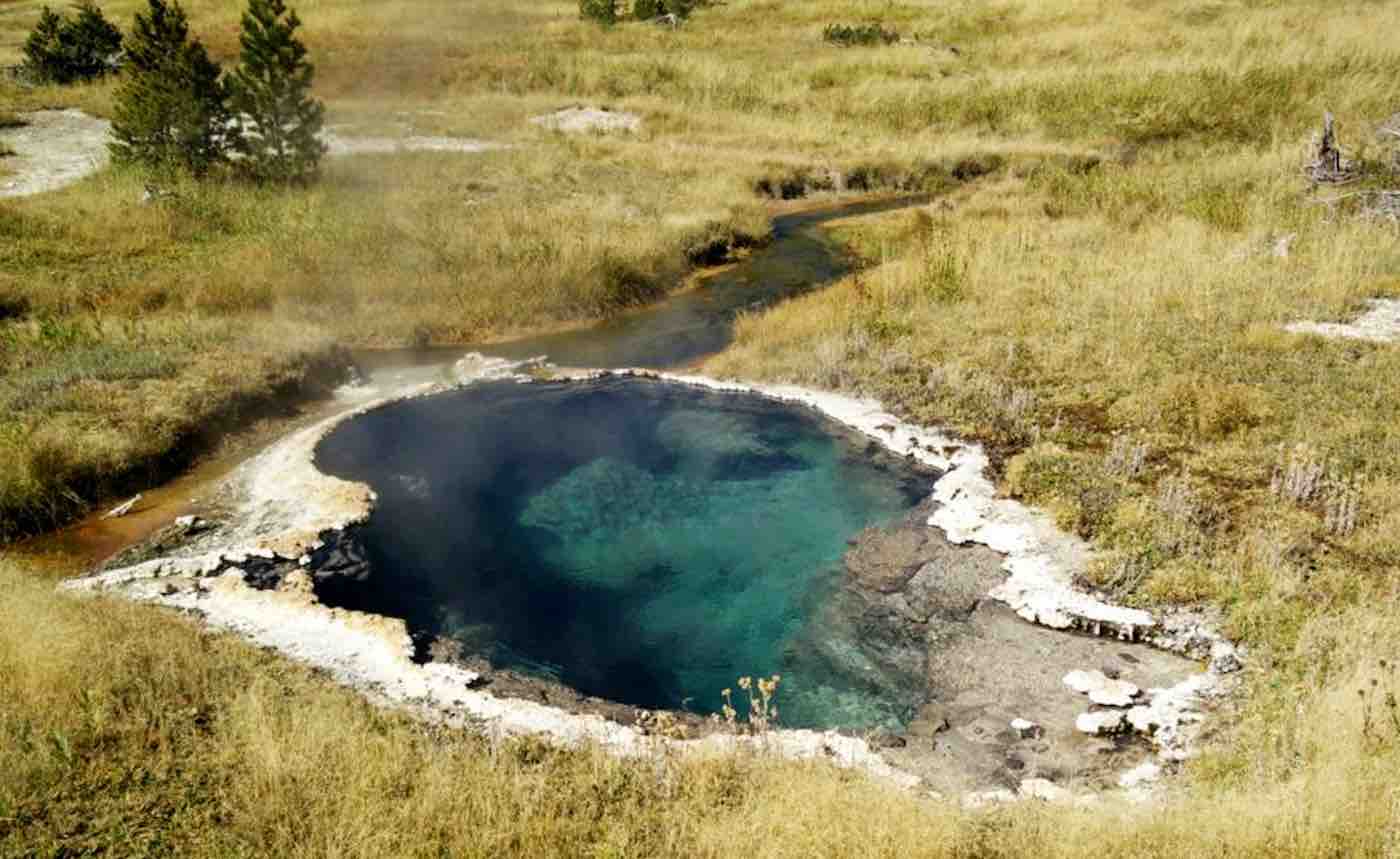A determined young student has made an exciting new discovery after he embarked on a strenuous 7-mile walk into the wilderness of Yellowstone National Park last August.
Unlike thousands of tourists who trek to admire the park’s iconic geysers and hot springs every year, Abdelrhman Mohamed was traveling with a team of scientists to hunt for life within them.
After several hours of hiking through scenic, isolated paths in the Heart Lake Geyser Basin area, the team found four pristine pools of hot water. They carefully left a few electrodes inserted into the edge of the water, hoping to coax little-known creatures out of hiding – bacteria that can eat and breathe electricity.
After 32 days, the team returned to the hot springs to collect the submerged electrodes. Working under the supervision of his fellow researchers, Mohamed analyzed the electrodes and found that they had succeeded in capturing their prey: heat-loving bacteria that “breathe” electricity through the solid carbon surface of the electrodes.
The Washington State University team, in collaboration with colleagues from Montana State University, published their research detailing the multiple bacterial communities they found in the Journal of Power Sources.
“This was the first time such bacteria were collected in situ in an extreme environment like an alkaline hot spring,” said Mohamed, adding that temperatures in the springs ranged from about 110 to nearly 200 degrees Fahrenheit.
These tiny creatures are not merely of academic interest, either; they may hold a key to solving some of the biggest challenges facing humanity.
MORE: Special Bacteria is Found to be a ‘Battery’ That Turns Sewage Waste into Clean Hydrogen Energy
As a means of fighting environmental pollution and creating more sustainable energy sources, such bacteria can “eat” pollution by converting toxic pollutants into less harmful substances and generating electricity in the process.
“As these bacteria pass their electrons into metals or other solid surfaces, they can produce a stream of electricity that can be used for low-power applications,” said Haluk Beyenal, a distinguished university professor of chemical engineering and bioengineering who helped to supervise the research.
Most living organisms – including humans – use electrons, which are tiny negatively-charged particles, in a complex chain of chemical reactions to power their bodies. Every organism needs a source of electrons and a place to dump the electrons to live. While we humans get our electrons from sugars in the food we eat and pass them into the oxygen we breathe through our lungs, several types of bacteria dump their electrons to outside metals or minerals, using protruding hair-like wires.
MORE: Scientists Accidentally Create Super Enzyme That Can Devour Plastic Pollution
To collect bacteria in such an extreme environment over 32 days, Mohamed invented a cheap portable potentiostat, an electronic device that could control the electrodes submerged in the hot springs for long periods of time.
“The natural conditions found in geothermal features such as hot springs are difficult to replicate in laboratory settings,” said Beyenal. “So, we developed a new strategy to enrich heat-loving bacteria in their natural environment.”
Though the researchers did not detail exactly how they will be continuing their work with the bacteria, it will ideally lead to an exciting new tool for combatting climate change and pollution in the near future.
(Source: Washington State University)
Power Up With Positivity By Sharing The News With Your Friends On Social Media – Photo by WSU




















